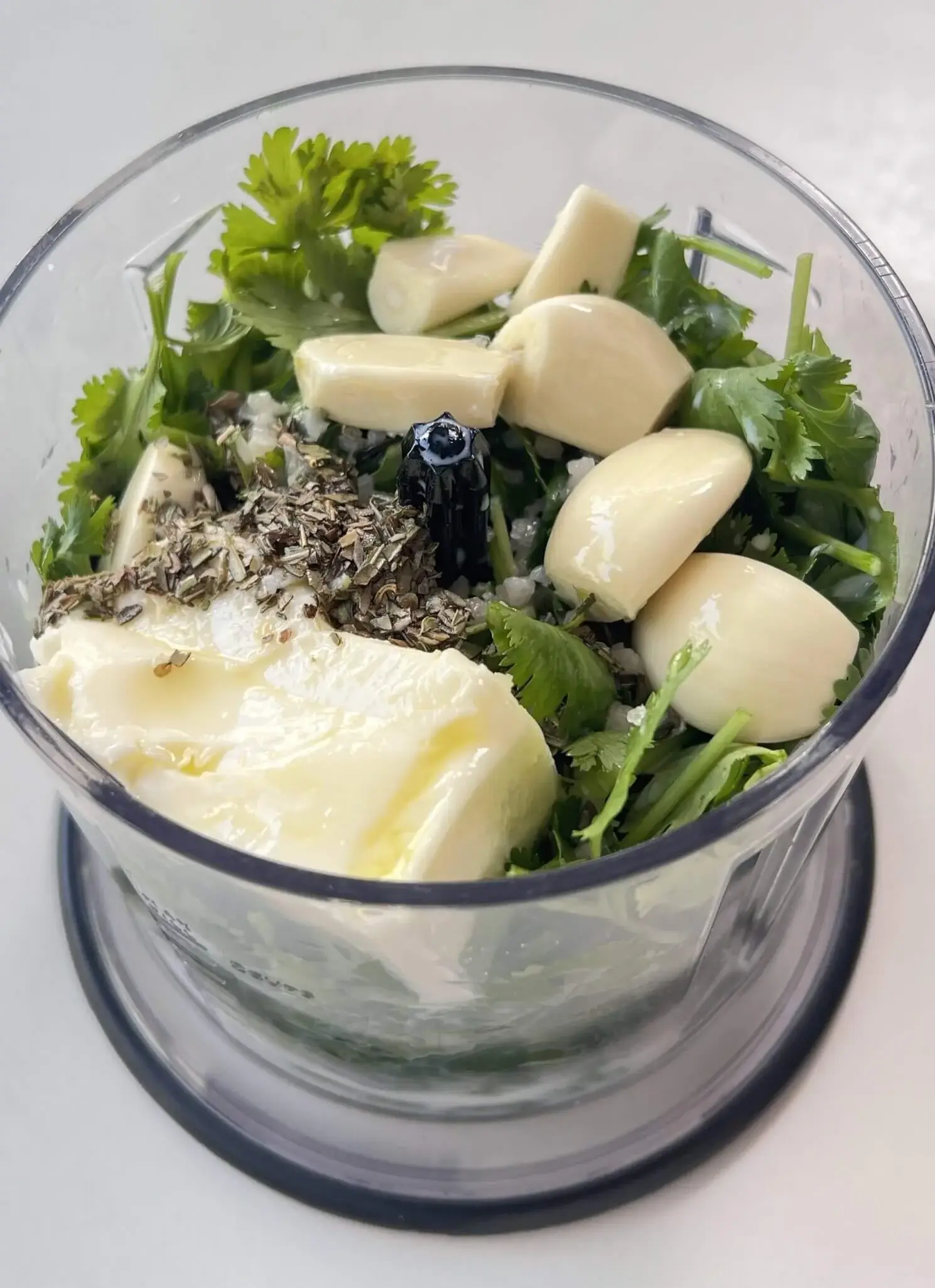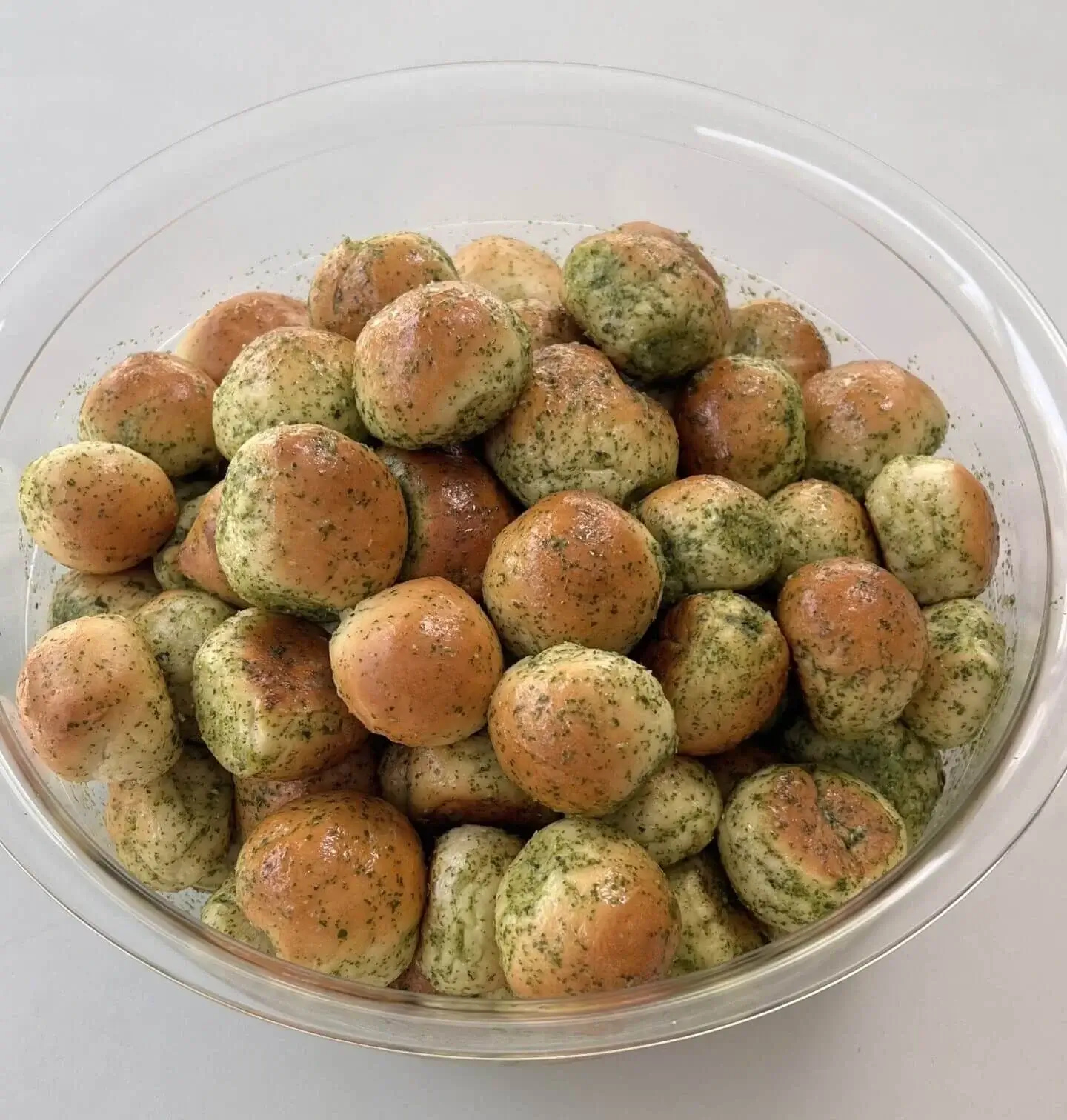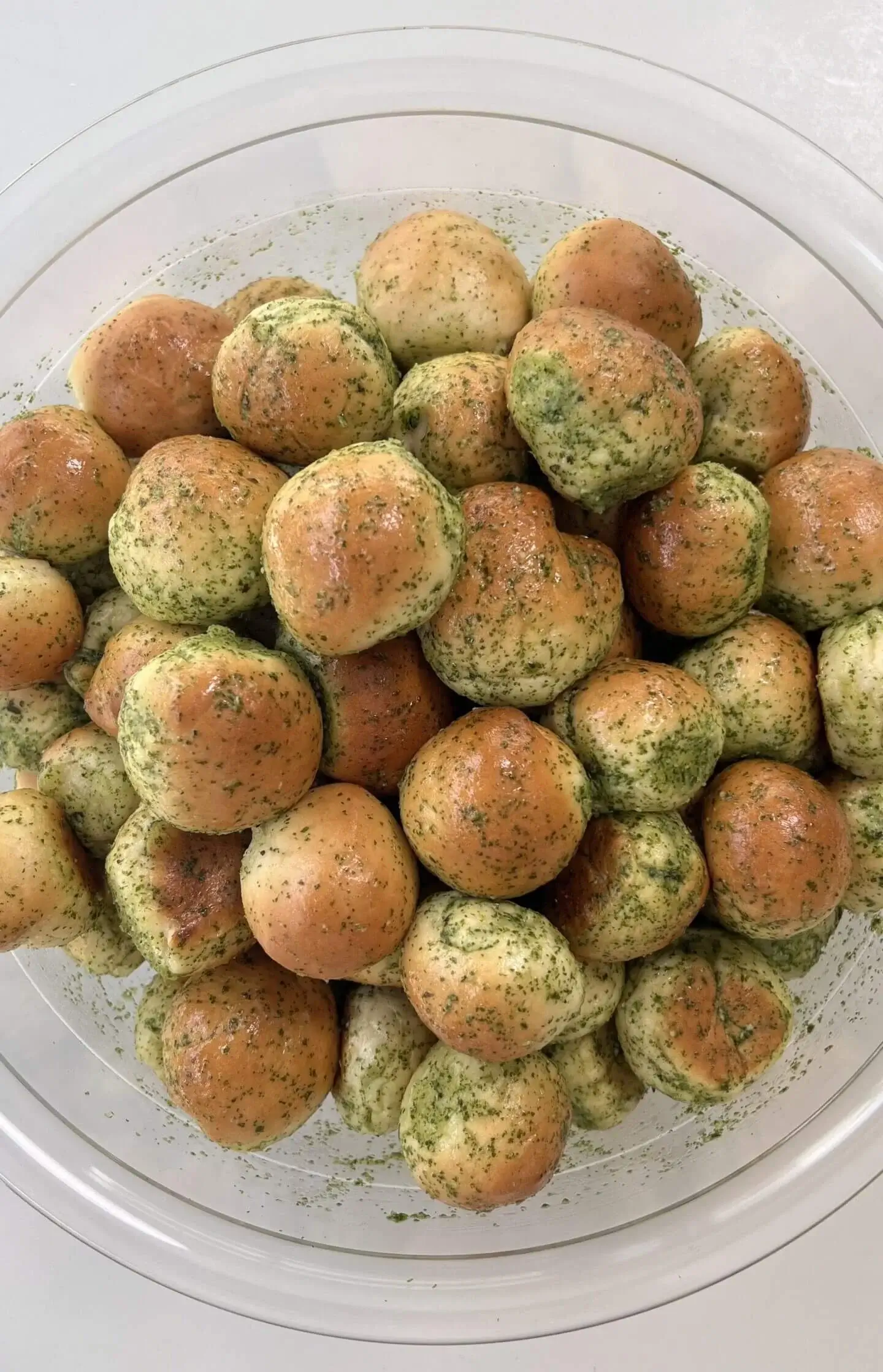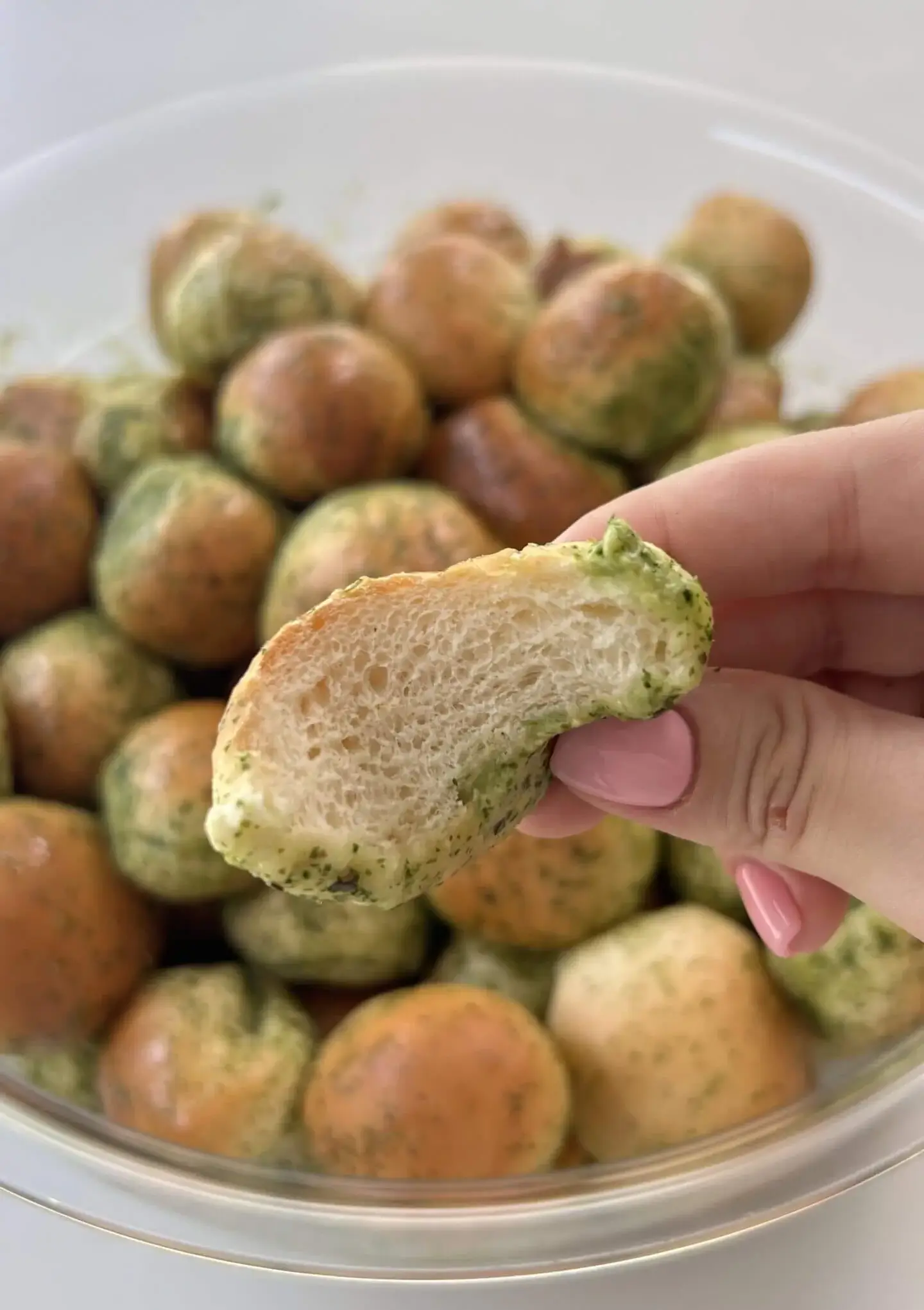This Cheesy Garlic Roll Recipe will Make You Go Nuts!
We may earn a commission from recommended products, at no extra cost to you. See Disclosure.
INGREDIENTS
Seasoning:
- 1 cup basil, chopped
- 1 garlic head, peeled and minced
- ½ cup olive oil
- ½ teaspoon dried oregano
- ¼ cup/50 grams soft butter
- ¼ cup milk
- Parmesan, grated
INSTRUCTIONS
- In a bowl, mix yeast, sugar, and milk; stir and set aside for a few minutes.
- In a mixer bowl, combine flour and water, then add the yeast mixture. Knead for 5 minutes. Add butter and salt, knead for another 5 minutes. Let the dough rise until doubled in size, about 90 minutes.
- Form small balls and place them on parchment paper. Allow them to rise for 15-20 minutes, then brush them with milk.
- Preheat the oven to 340°F (170°C) and bake until golden brown.
- Remove from the oven and place in a bowl. Mix them together with the seasoning. You can sprinkle grated Parmesan cheese on top if desired.

FAQ
Can I use fresh yeast for this cheesy garlic roll recipe?
Yes, you can use fresh yeast instead of dry yeast in this recipe. Fresh yeast, also known as cake yeast or compressed yeast, has a higher moisture content and is more perishable. To substitute, use a ratio of about 3:1 fresh yeast to dry yeast. For example, if the recipe calls for 2 tablespoons of dry yeast, you’ll need about 6 tablespoons of fresh yeast. Dissolve the fresh yeast in a small amount of warm water or milk before mixing it with the other ingredients.

How long should I let the dough rise if my kitchen is cold?
If your kitchen is cold, the dough may take longer to rise. Typically, dough should double in size, which usually takes about 90 minutes at room temperature. In a colder environment, it might take up to 2-3 hours. To help the dough rise more efficiently, you can place it in a warm spot, like an oven with the light on or near a radiator. Alternatively, you can use a proofing box or a warm water bath to create a more conducive environment for rising.

Can I substitute the milk with a non-dairy alternative?
Yes, you can substitute whole milk with a non-dairy alternative in this recipe. Almond milk, soy milk, oat milk, and coconut milk are good options. Ensure that the non-dairy milk is unsweetened and unflavored to avoid altering the taste of the rolls. The texture and rise of the dough should remain similar, though the flavor might be slightly different. Measure the non-dairy milk in the same quantity as the whole milk called for in the recipe.

How can I make the rolls fluffier?
To make the rolls fluffier, ensure your yeast is fresh and active. Proof the yeast by dissolving it in warm water (around 110°F) with a bit of sugar until it becomes frothy. Use bread flour, which has a higher protein content, for better gluten development. Knead the dough thoroughly to build elasticity, and allow it to rise until it doubles in size. Incorporating an extra egg or a bit more fat, like butter, can also enhance fluffiness. Additionally, avoid over-flouring the dough, and bake the rolls in a preheated oven to ensure even cooking and a light, airy texture.

Can I prepare the dough in advance and bake it later?
Yes, you can prepare the dough in advance and bake it later. After kneading, let the dough rise once, then punch it down and shape it into balls. Place the dough balls on a baking sheet, cover them tightly with plastic wrap, and refrigerate for up to 24 hours. When ready to bake, let the dough sit at room temperature for about 30 minutes to an hour until it slightly puffs up. Then proceed with brushing and baking as directed.

How do I store leftover rolls to keep them fresh?
To keep leftover rolls fresh, allow them to cool completely, then store them in an airtight container or a resealable plastic bag at room temperature for up to two days. For longer storage, place the rolls in a freezer-safe bag and freeze for up to three months. When ready to eat, thaw at room temperature or warm them in the oven at 350°F (175°C) for about 10 minutes to restore their freshness and softness.

What other cheeses work well in this cheesy garlic roll recipe?
Various cheeses can work well in this cheesy garlic roll recipe, adding unique flavors and textures. Mozzarella is a great option for its meltability and mild taste, making the rolls wonderfully gooey. Cheddar adds a sharp, tangy flavor, while Gruyère offers a rich, nutty taste that pairs well with garlic. Parmesan or Pecorino Romano can be sprinkled on top for a salty, savory finish. For a bit of spice, try Pepper Jack. Soft cheeses like Brie or Camembert can also create a creamy center. Feel free to mix and match to find your perfect cheesy combination for these garlic rolls.


